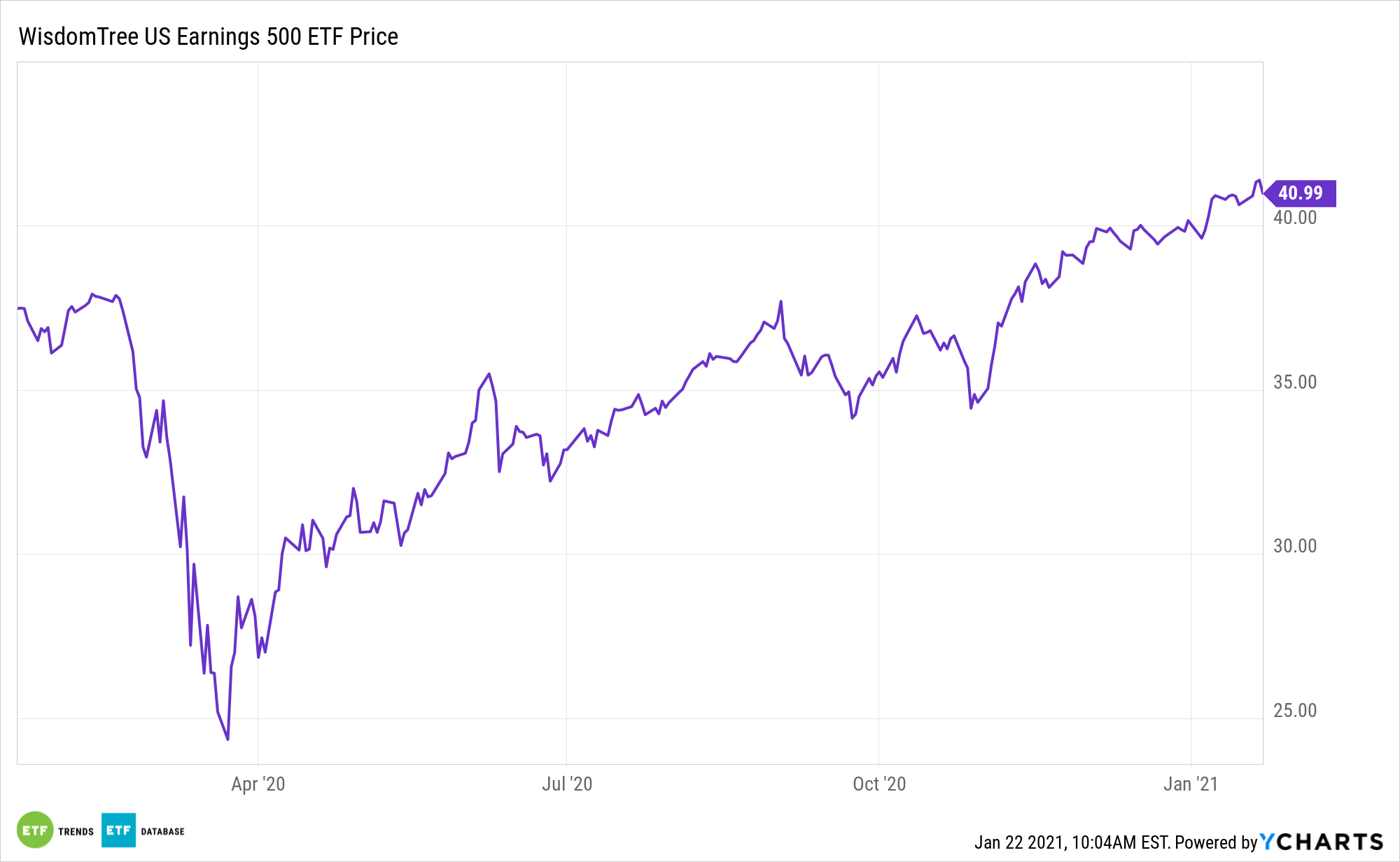Multi-factor investing is suitable across a variety of market environments and is looking to prove itself again in 2021.
Advisors can access a variety of multi-factor strategies under a single umbrella with the WisdomTree Multi-Factor Model Portfolio.
“This model portfolio is designed for investors with a long-term horizon looking for exposure to a broad universe of U.S. equities primarily using factor focused ETFs. The selected ETFs provide certain factor tilts that have the potential to generate excess return relative to comparable cap-weighted benchmarks over longer-term holding periods. The strategies may use both WisdomTree and non-WisdomTree ETFs,” according to WisdomTree.
The WisdomTree Earnings 500 Fund (NYSEArca: EPS) is the largest component in this model portfolio.

The EPS ETF’s Winning Strategy
EPS, a revered name among multi-factor ETFs, targets an earnings-weighted index that screens for positive cumulative earnings over the most recent four fiscal quarter period, and assigns weights to components to reflect the proportionate share of the aggregate learning’s each company generated, so those with greater earnings have larger weights. That gives the fund value and quality tilts.
“Rather than pursue an array of factors, EPS follows the profits. Firms must post positive cumulative earnings over the trailing four quarters at each annual reconstitution to be eligible for entry into this portfolio,” writes Morningstar analyst Ryan Jackson. “The fund sweeps in the largest 500 U.S. stocks that check this box and sums up all of their earnings. Dividing each stock’s earnings by the collective earnings of all stocks in the portfolio yields their portfolio weighting.”
Importantly, EPS tilts away from high P/E ratio stocks, which are usually growth names and often vulnerable when volatility spikes.
While it’s not a cap-weighted fund, EPS does the check the boxes of a core domestic large cap equity holding because it has a deep roster and is cost-effective, with an annual fee of 0.08% per year, or $8 on a $10,000 investment.
“How the fund channels value is not as direct. While earnings and stock prices tend to be highly correlated, they are not the same,” adds Jackson. “This fund breaks the link between stocks’ market caps and their portfolio weights by emphasizing firms that are underpriced relative to their profits. When this fund rebalances each December, it mechanically overweights firms whose prices have declined relative to their earnings.”
For more on how to implement model portfolios, visit our Model Portfolio Channel.
The opinions and forecasts expressed herein are solely those of Tom Lydon, and may not actually come to pass. Information on this site should not be used or construed as an offer to sell, a solicitation of an offer to buy, or a recommendation for any product.








